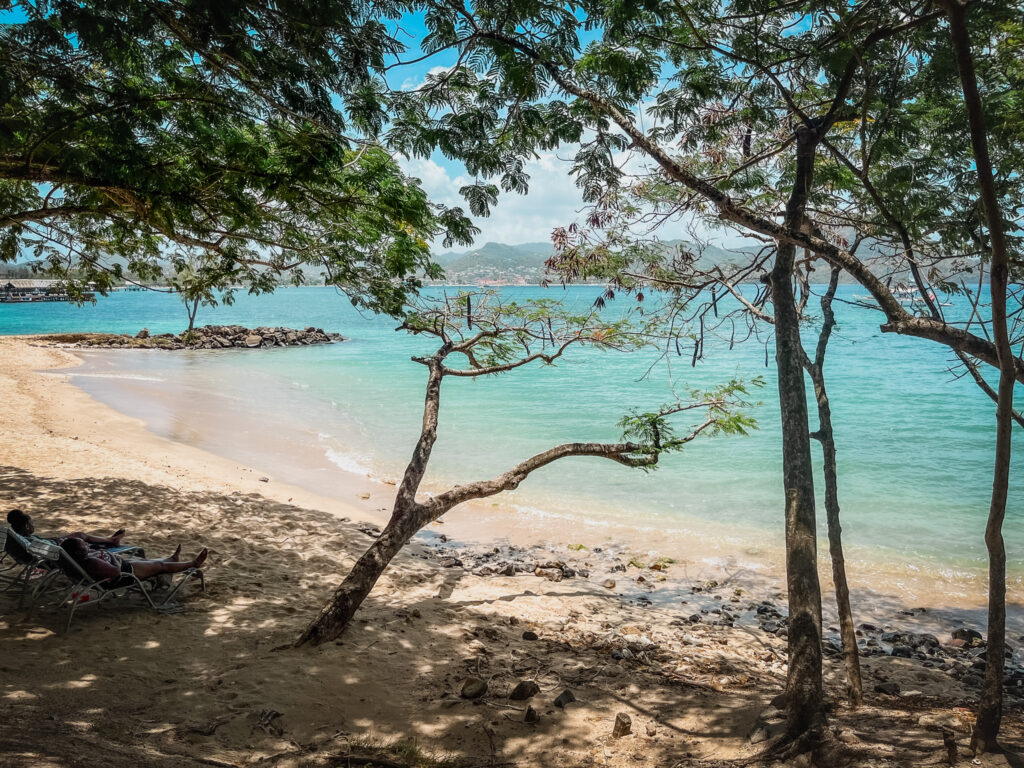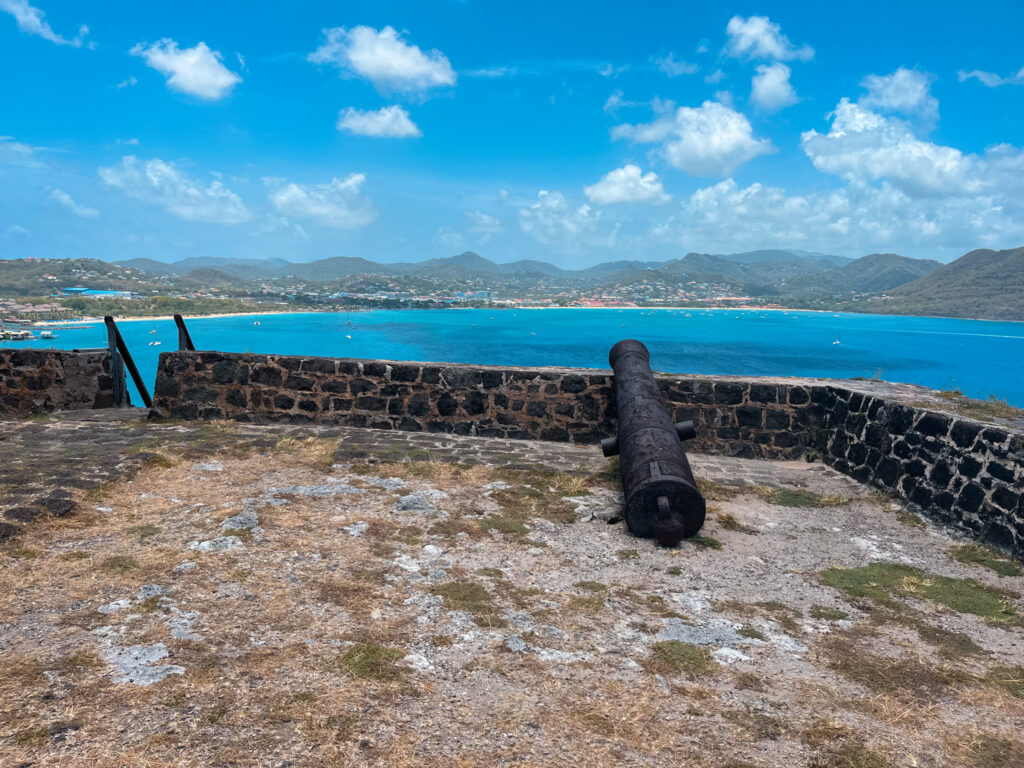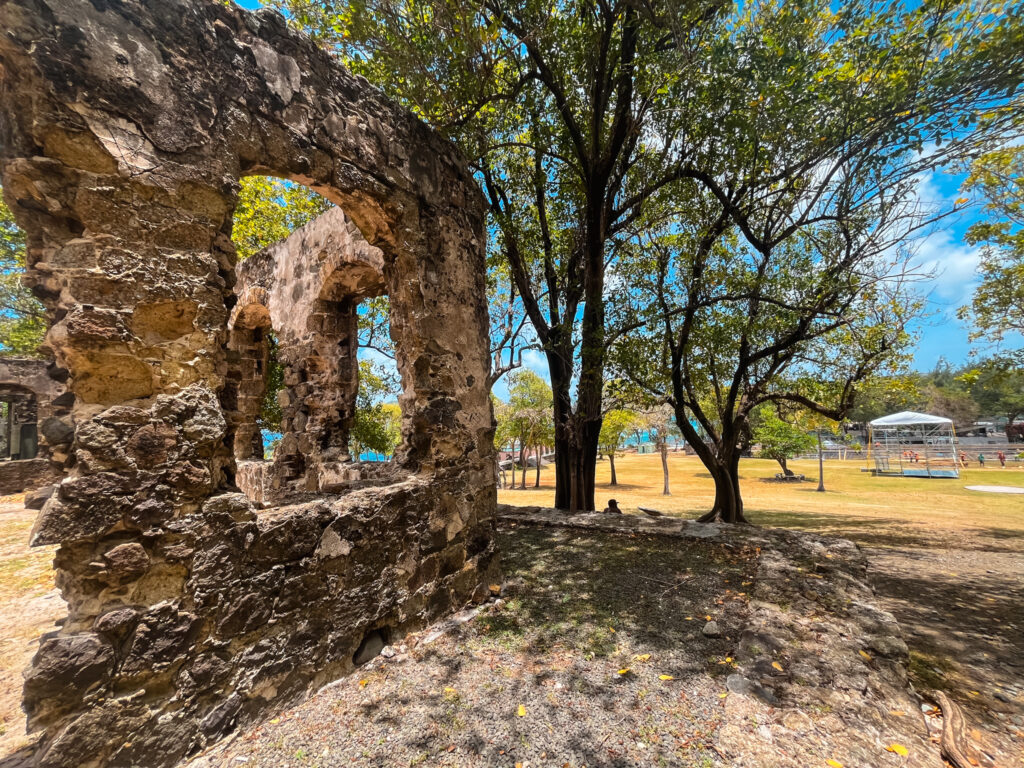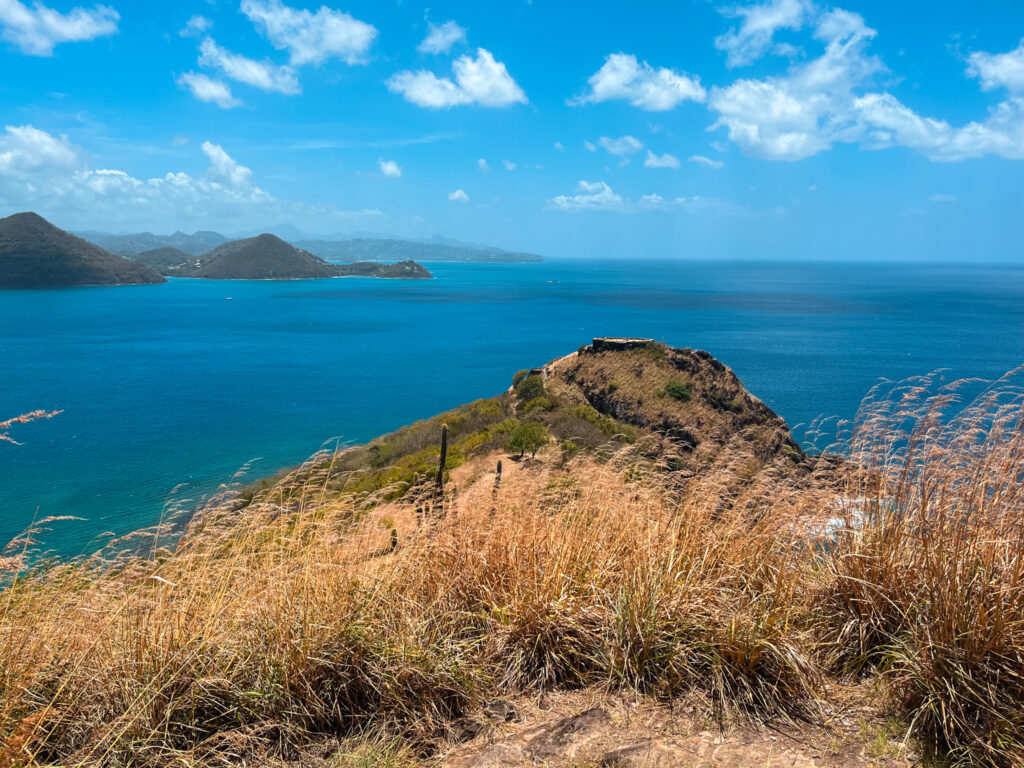Saint Lucia is an absolutely stunning island with breathtaking views across the island. One of my top places to explore on the island, and a slightly off the beaten path destination is Pigeon Island Saint Lucia. I spent part of a day with family exploring the point, snorkeling, and enjoying lunch right outsite the entrance. In this guide I’ll share what you need to know to visit this beautiful part of the island.
Looking for more guides on St. Lucia? Check out:
- Where to go Horseback Riding in St Lucia
- The Windjammer Landing St Lucia
- Looking for the Best Catamaran Tours St Lucia has to offer? Here’s our Top Pick

What to See and Do on Pigeon Island Saint Lucia
When most people visit Pigeon Island, they are there to take the walk out to Fort Rodney and enjoy one of the beautiful beaches. I visited this part of the island on a day trip from Windjammer Landing. Several in our group went horseback riding and the rest of us went to the beach right outside the entrance of the part. We stopped into one of the restaurants just outside the entrance for lunch and then I did a solo walk inside the park, visiting Fort Rodney, two beaches, and Signal Peak.
Here are the highlights of the park:
Fort Rodney: Explore the 18th-century fort built by the British. Learn about its role in colonial military strategy.

Signal Peak: Hike to the summit for panoramic views of Saint Lucia and the surrounding waters. The trail up to Signal Point is slightly exposed and steep.
Beaches: Relax on beautiful sandy shores like Pigeon Island Beach and Cariblue Beach.
Hiking Trails: Enjoy well-marked trails leading through lush vegetation and historic ruins. Even if you don’t want to go all the way to the point, there are several trails to explore.
Snorkeling and Diving: Explore vibrant coral reefs and marine life around the island.
Kayaking and Boating: Rent a kayak or join a boating tour to explore the island’s coastline.
Picnicking: Use designated picnic areas equipped with tables and shelters.
Food and Shopping: you can find several restaurants and small shops just outside the entrance to the park.
Guided Tours: You can find several guided tours in the area including hotel shuttles, bike tours and snorkeling
Getting to Pigeon Island
Pigeon Island is located on the northwest coast of Saint Lucia, near the town of Gros Islet. Connected to the mainland by a causeway, the island is easily accessible from major tourist hubs, such as Castries, the capital city, and Rodney Bay.
Transportation Options: Car, Taxi, Boat, Guided Tours
- Car: Visitors can rent a car and drive to Pigeon Island. The journey from Castries takes about 20 minutes, while the drive from Hewanorra International Airport in Vieux Fort takes approximately 1.5 hours. Ample parking is available near the entrance.
- Taxi: Taxis are a convenient option for those who prefer not to drive. Taxis can be hired from any part of the island, and drivers are typically knowledgeable about the area and can provide a comfortable ride.
- Boat: For a more scenic route, visitors can take a boat trip from various points along the coast, including Castries and Rodney Bay. Some tours offer snorkeling and diving stops along the way.
- Guided Tours: Several tour companies offer guided tours to Pigeon Island, providing transportation, historical context, and insights into the island’s flora and fauna. These tours often include additional activities like hiking, snorkeling, and lunch.

Entering the Park
Admission Fees and Payment Methods To enter Pigeon Island National Park, an admission fee is required. As of the latest updates, the fees are:
- Adults: USD $7
- Children (5-12 years): USD $3
- Children under 5: Free Payment can be made in cash (USD or Eastern Caribbean Dollars) or by credit card at the park entrance. Special rates may be available for groups, schools, and local residents.
Opening and Closing Hours Pigeon Island National Park is open daily, with hours typically from 9:00 AM to 5:00 PM. During peak tourist seasons or special events, these hours may be extended. It’s advisable to check the official Pigeon Island National Park website or contact the visitor center for the most current information.

Historical Background of Pigeon Island
Before European colonization, Pigeon Island was inhabited by indigenous peoples, including the Arawaks and later the Caribs. These early inhabitants used the island for fishing, shelter, and as a strategic lookout point, leaving behind traces of their pottery and tools.

During the colonial era, Pigeon Island became a focal point of conflict between the French and British. The island’s strategic location made it an ideal military outpost, leading to the construction of Fort Rodney by the British, which played a significant role in various naval battles, including those during the American Revolutionary War.
In the modern era, Pigeon Island has been transformed into a national park, established in 1979 to preserve its rich history and natural beauty. Preservation efforts have ensured that the historical ruins, including Fort Rodney and Signal Peak, remain accessible to the public, providing insight into the island’s storied past while promoting conservation and education.

Looking for more adventure destinations and ideas? Join our newsletter.





